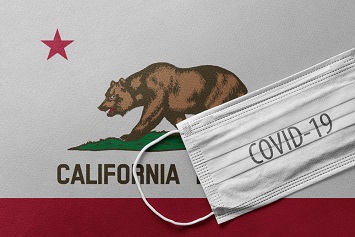California’s Division of Occupational Safety and Health (Cal/OSHA) updated five of its industry-specific coronavirus disease 2019 (COVID-19) infection protection guidelines for agriculture, child care, construction, grocery stores, and logistics. COVID-19 is a respiratory disease caused by the SARS-C0V-2 virus.
The agency revised its guidelines to update criteria for returning to work after a COVID-19 diagnosis and add a reference to the California Department of Public Health’s (CDPH) Guidance on Returning to Work or School Following COVID-19 Diagnosis.
CDPH instructions now are that individuals who test positive for SARS-CoV-2 and who have had symptoms may return to work or school when:
- At least 10 days have passed since symptoms first appeared.
- At least 24 hours have passed with no fever without the use of fever-reducing medications.
- Other symptoms have improved.
Symptoms of COVID-19 include congestion or runny nose, cough, diarrhea, fatigue, fever or chills, headache, muscle or body aches, nausea or vomiting, shortness of breath of difficulty breathing, and sore throat.
Individuals who test positive for SARS-CoV-2 but have never developed symptoms may return to work or school 10 days after the date of their first positive test for SARS-CoV-2. The CDPH recommends that employers and schools follow the time- and symptom-based approach to determine when individuals can return to work or school rather than requiring a negative SARS-CoV-2 test.
Cal/OSHA previously issued updated guidelines in July to incorporate the CDPH’s recommendation for the use of cloth face coverings.
Cal/OSHA has issued and continues to update infection prevention guidelines because employers must comply with the state’s Injury and Illness Prevention Program (IIPP) standard to protect employees from all recognized workplace hazards, including infectious diseases. While the federal Occupational Safety and Health Administration (OSHA) encourages employers to utilize safety and health management programs, there is no federal standard like California’s IIPP standard.
COVID-19 is widespread in California, as it is in most of the United States, making it a recognized workplace health hazard.
The guidelines remind employers that hand-washing with soap and water is more effective than hand sanitizer against the SARS-CoV-2 virus that causes COVID-19. However, the guidelines insist that employers provide hand sanitizer where soap and water are impractical.
The guidelines point out the importance of frequent hand-washing with soap and water and that workers should follow hand-washing guidelines from the federal Centers for Disease Control and Prevention (CDC) to wash for at least 20 seconds:
- When employees arrive at work and before they leave at the end of the day,
- Before and after eating or using the toilet,
- After close interaction with other people,
- After contacting shared surfaces or tools,
- Before and after wearing masks or gloves, and
- After blowing the nose or sneezing.
While Cal/OSHA and public health authorities recommend workers wear cloth face coverings instead of respirators to prevent community spread of COVID-19, Cal/OSHA reminded agricultural employers that they must provide workers with respirators when needed to protect against excessive dust, Coccidioides fungus (the source of Valley Fever), or other harmful agents.

